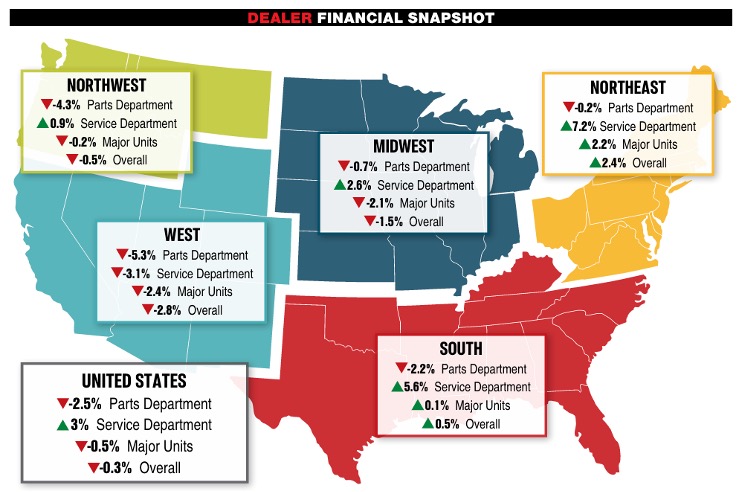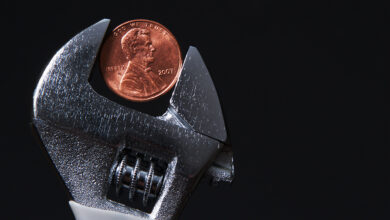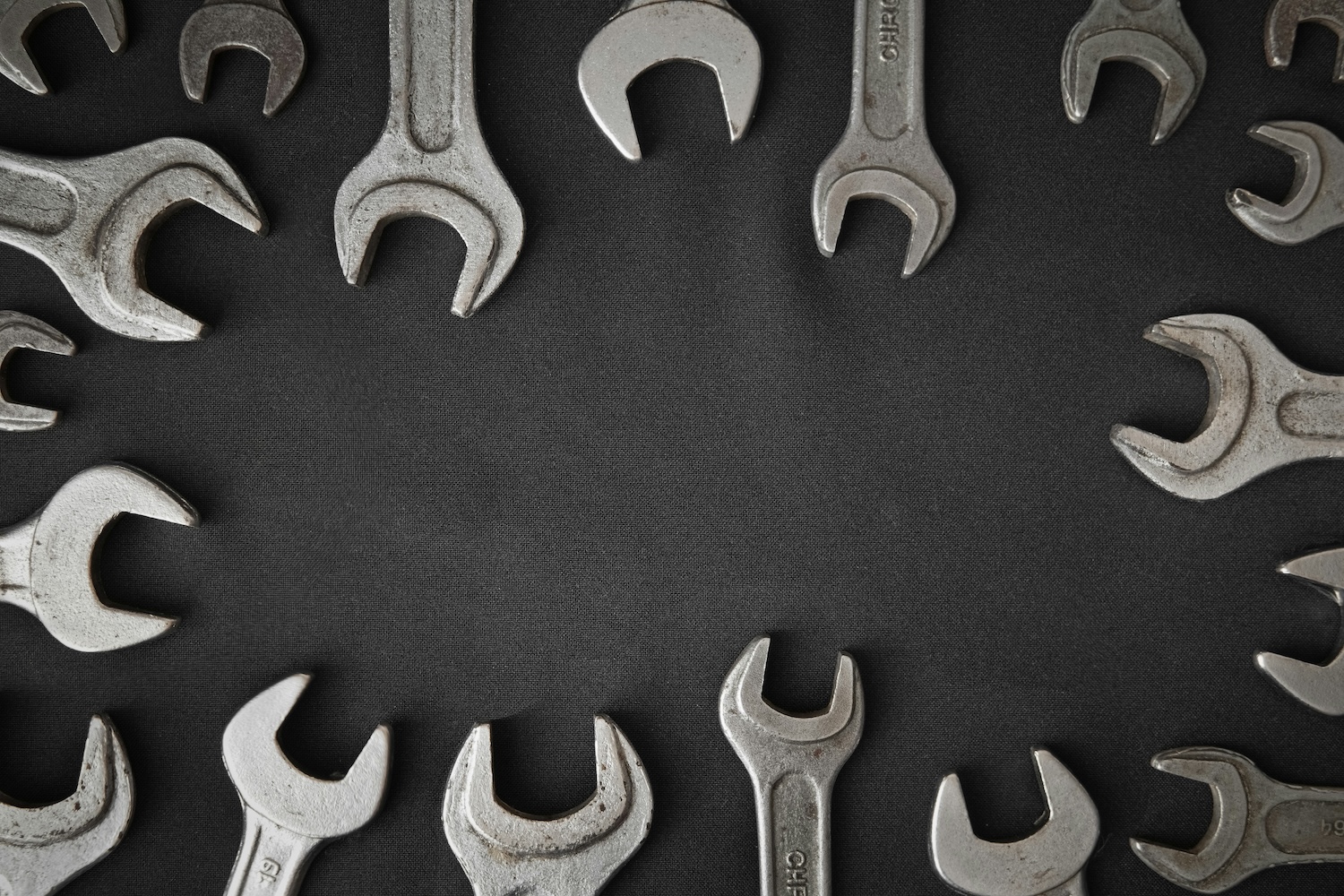
- KPI – May 2025: State of Manufacturing
- KPI – May 2025: State of Business – Automotive Industry
- KPI – May 2025: State of the Economy
- KPI – May 2025: Consumer Trends
- KPI – May 2025: Recent Vehicle Recalls
Economic data continues to yield mixed results. Consumers remain on edge, as evident in the most recent sentiment surveys. The reality of a global tariff war is creating enormous uncertainty, with consumers and businesses alike sharing a fear of the unknown.
While sentiment is sour, consumer confidence is turning a corner and stocks are stabilizing. Data shows some bright spots ahead.
The seasonally adjusted Fiserv Small Business Index registered 151 in April, a nominal increase of 0.4% month-over-month and up 3.2% year-over-year. Similarly, the Fiserv Transaction Index increased to 118.6, reflecting a shift in consumer spending behavior due to recent policy uncertainty.
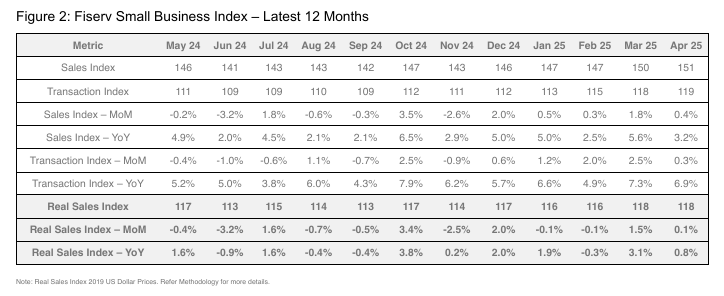
Key takeaways, courtesy of the Fiserv Small Business Sales Index:
- The pace of sales growth for Goods (+0.6%) and Services (+0.4%) slowed month-over-month, suggesting an overall pullback in spending at small businesses. On an annual basis, Services (+3.6%) continued to outperform Goods (+2.2%).
- Current data highlights various growth drivers. Merchant Wholesalers, Nondurable Goods posted the strongest annual gains, contributing a +5.5% increase in sales and +7.1% growth in transactions. General Merchandise Retailers also performed well, driving year-over-year sales growth of +4.7% and transaction growth of +8%. Sporting Goods and Miscellaneous Retailers found momentum, with sales up +1.8% and transactions surging +6.6%.

The NFIB Small Business Optimism Index dipped to 95.8 in April, the second consecutive month below the 51-year average of 98.
“Uncertainty continues to be a major impediment for small business owners in operating their business, affecting everything from hiring plans to investment decisions. While owners are still trying to fill a high number of current job openings, their outlook on business conditions is less supportive of future business investments,” says Bill Dunkelberg, NFIB chief economist.
Important takeaways, courtesy of NFIB:
- The net percent of owners expecting better business conditions fell six points to a net 15% (seasonally adjusted), the lowest since last October. This component, along with unfilled job openings, contributed most to the Optimism Index’s decline.
- The net percent of owners expecting higher real sales volumes fell four points to a net negative 1% (seasonally adjusted). This is the fourth consecutive month real sales expectations declined.
- The percentage of small business owners reporting labor quality as the single most important problem for business was unchanged at 19%, remaining the top issue for the third consecutive month. A seasonally adjusted 34% of all small business owners reported job openings they could not fill in April, down six points from March. Of the 56% of owners hiring or trying to hire in April, 85% reported few or no qualified applicants for the positions they were trying to fill.
- Fourteen percent of owners reported inflation as their single most important problem in operating their business, down two points from March and the lowest reading since September 2021. Inflation is now ranked in third place as the single most important problem.
- In April, 10% of small business owners reported the cost or availability of insurance as their single most important problem, up two points from last month and the highest since March 2020.
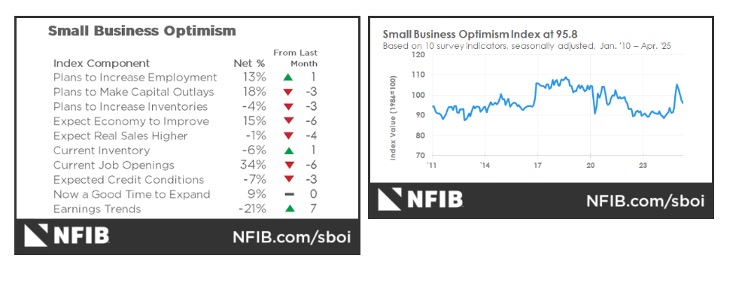
Professionals in the automotive, RV and powersports industries remain steadfast in their efforts to evolve their business models and grow their brands in the face of adversity. As such, the monthly “Key Performance Indicator Report” serves as an objective wellness check on the overall health of our nation, from the state of manufacturing and vehicle sales to current economic conditions and consumer trends. Below are a few key data points explained in further detail throughout the report.
Key data points:
- Economic activity in the manufacturing sector contracted in April for the second month in a row, following a two-month expansion preceded by 26 straight months of contraction, say the nation’s supply executives in the latest Manufacturing ISM Report On Business. The Manufacturing PMI registered 48.7% in April, 0.3% lower compared to the 49% recorded in March.
- In April, the Consumer Price Index for All Urban Consumers (CPI-U) increased 0.2% on a seasonally-adjusted basis after falling 0.1% in March, according to the U.S. Bureau of Labor Statistics. Over the last 12 months, the all-items index increased 2.3% before seasonal adjustment.
- In April, the Global Light Vehicle (LV) selling rate hit 92 million units per year, up from a downwardly revised 90.4 million units in March. Overall, the market increased 6% (7.3 million units) year-over-year. Total new vehicle sales for May 2025, including retail and non-retail transactions, are projected to reach 1,489,800—flat year-over-year, according to a joint forecast from J.D. Power and GlobalData.
- Powersports Business says dealers across the country reported an overall combined revenue decline of 0.3% year-over-year in April, according to composite data from more than 1,700 dealerships in the U.S. that utilize CDK Lightspeed DMS. On average, dealerships were down 0.5% in major units and 2.5% in parts, but up 3% in service.
